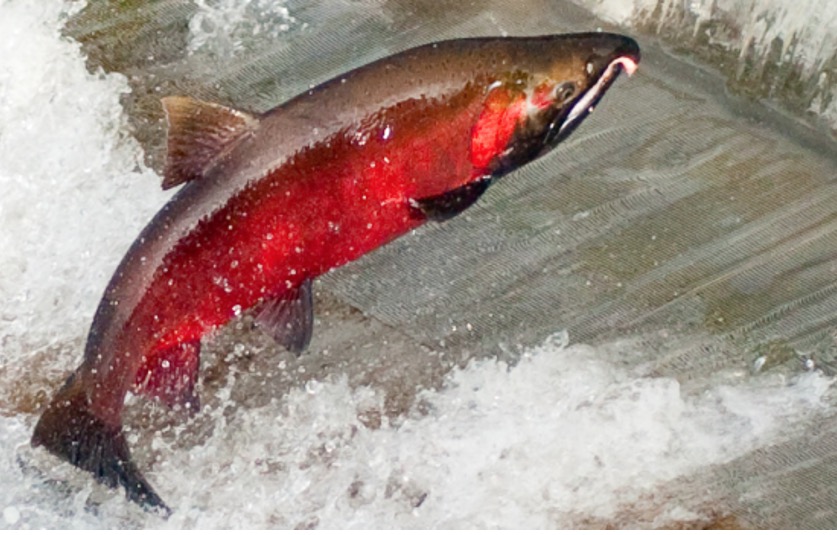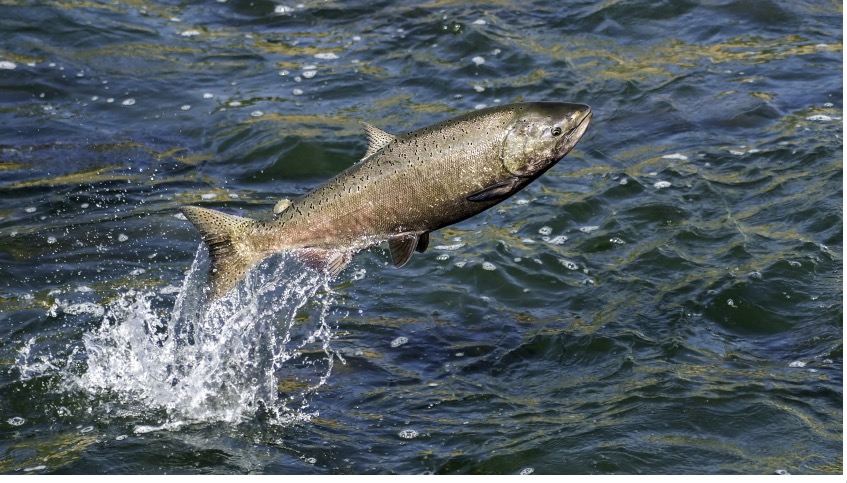CommentsCLIMATE WATCH - California’s once-abundant salmon runs are on the verge of collapse.
That’s a tragedy, but this story is bigger than the extinction of an iconic fish that once fed millions of people and was the basis of thriving commercial, tribal and sport fisheries. Salmon (to mix zoological metaphors) are the canary in the coal mine for California’s water and power ratepayers.
Our salmon are flirting with extinction because they’re not getting the cold water they need to survive. Over the last few decades, that water mostly has been supplied from Shasta Dam on the Sacramento River, other dams on Sacramento and San Joaquin river tributaries, and Trinity Dam on the Trinity and Klamath river system. These rivers comprise the state’s remaining salmon strongholds.

The ongoing drought and resource mismanagement, however, have left such cold water in short supply. Although they were aware of the growing water crisis, state and federal water managers have drawn down reservoirs rapidly over the past three years, leaving cold water — indeed, any water — in short supply. Why? To provide water to a small subset of commercial growers.
Year in and year out, wet winter or dry, growers take 80% of California’s controlled and managed water, while cities only receive 10% to 13%. During drought years, millions of state residents endure severe water-use restrictions. That burden isn’t necessarily shared by some privileged growers. Long-established — and highly inequitable — water rights claims see to that.
One example: The San Joaquin River Exchange Contractors are beneficiaries of a legal settlement with the U.S. Bureau of Reclamation, a deal that cleared the way for the construction of Friant Dam on the San Joaquin River. The four irrigation districts that participated in the settlement traded their long-claimed rights to divert water from the San Joaquin River for water from the Central Valley Project — the enormous federal conveyance system that sends water to Southern California farms and cities from the Sacramento-San Joaquin River Delta.
The deal assured the small group of San Joaquin River water claimants reliable, long-term and generous water allocations — even during drought.
In average years, the exchange contractors are allocated about 865,000 acre-feet of water — more than Los Angeles uses in a year. In critically dry years, the contractors still receive generous allotments.
The West Coast is now struggling with its deepest drought in 1,200 years, and urban ratepayers are facing draconian restrictions while the San Joaquin River Exchange Contractors are receiving 75% of their average deliveries.
Further, the rapid draining of our reservoirs to meet the settlement and senior contractor allocations is contributing to another state crisis: power shortages.
Hydroelectric production is down significantly because of low reservoir storage levels and decreased head (energy from water flow) on the turbines. In 2020, the first year of the current drought, hydropower produced 11% of the state’s electricity, compared with 2019, when hydropower produced 19%.
Hotter weather from climate change is expected to increase demand for air conditioning and power. Rolling blackouts are a real possibility this year.
In short, we’re in a new world — one that will be characterized by multiple drought years punctuated by extremely wet winters. Stunningly, the agencies that control our water — the California Department of Water Resources and the federal Bureau of Reclamation — have no formal long-term drought plans.
This is unacceptable, but there is a recourse. The contracts for the San Joaquin River Exchange recipients include a five-year renewal window, with the Bureau of Reclamation empowered to modify terms prior to contract extension.
Federal policy intersects directly with California’s governance, economic stability and social well-being. State leaders must petition the Biden administration to change the settlement contract to reflect climate realities. And because state policymakers often respond with alacrity to broad-based citizen demands, Californians must urge our governor and legislators to act now — before the reservoirs run dry, the salmon disappear, and average people can’t flush their toilets, wash their clothes, run their air conditioners or light their homes.
(Tom Stokely is a member of the board of the California Water Impact Network, a nonprofit working for the equitable distribution of water resources. This article was featured in Cal Matters.)
















